
__________
To inquire about a translation for this nashīd for a fee email: [email protected]
Month: June 2013
New pamphlet from Jabhat al-Nuṣrah in Wilāyat Dara’ā: "Why the Rulings of Sharī'ah?"
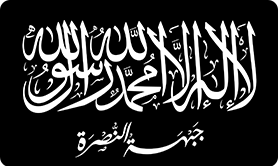
Click the following link for a safe PDF copy: Jabhat al-Nuṣrah in Wilāyat Dara’ā — “Why the Rulings of Sharī’ah?”
__________
To inquire about a translation for this pamphlet for a fee email: [email protected]
English translation of article from al-Qā’idah in the Islamic Maghrib's Shaykh Aḥmad Abū ‘Abd al-Ilah al-Jījilī: "Did Africa Really Get Its Independence?"

Click the following link for a safe PDF copy: Shaykh Aḥmad Abū ‘Abd al-Ilah al-Jījilī — “Did Africa Really Get Its Independence?”
__________
Articles of the Week – 6/8-6/14
Saturday June 8:
How Dangerous Is a Terrorist with a Twitter Handle? – Jonathan Schanzer, Foreign Policy: https://atfp.co/16Sz5w9
Sunday June 9:
A Few Entries into the Syrian MB Vault – Marisa Urgo, Making Sense of Jihad: https://bit.ly/13v0gZp
The Ongoing Battle for Education; Uprisings, Negotiations and Taleban Tactics – Antonio Giustozzi and Claudio Franco, Afghanistan Analysts Network: https://bit.ly/16Vmfxe
Monday June 10:
Zawahiri and al Qaeda Central out of the loop in Iraq & Syria – Clint Watts, Selected Wisdom: https://lnkd.in/hNaJkq
Towards an “Islamic Republic of Mali?” – Alex Thurston, The Fletcher Forum of World Affairs: https://bit.ly/106oU4b
Tuesday June 11:
Toward an Islamic Spring: Abu Muhammad al-Maqdisi’s Prison Production – Cole Bunzel, Jihadica: https://bit.ly/18tXtF6
Thursday June 13:
A Message of Felicitation from the Esteemed Amir-Ul-Momineen on the Occasion of Eid: An Analysis of Taliban Eid al-Adha and Eid al-Fitr Statements from 2006 to 2012 – Timothy D. Soper, Small Wars Journal: https://bit.ly/11BCojA
Friday June 14:
Iran’s Losses In the “35th Province” (Syria), Part 1 – Phillip Smyth, Jihadology: bit.ly/10i42aj
New statement from Ibn Taymīyyah Center for Media: "Explanatory Statement: About the Allegations of the HAMAS Ministry of Interior Concerning the Arrests of the Preacher Shaykh Ḥussayn al-J’aytnī and the Other Salafīs”

Click the following link for a safe PDF copy: Ibn Taymīyyah Center for Media — “Explanatory Statement- About the Allegations of the HAMAS Ministry of Interior Concerning the Arrests of the Preacher Shaykh Ḥussayn al-J’aytnī and the Other Salafīs”
_________
To inquire about a translation for this statement for a fee email: [email protected]
Hizballah Cavalcade: Iran’s Losses In the “35th Province” (Syria), Part 1
NOTE: For prior parts in the Hizballah Cavalcade series you can view an archive of it all here.
—
Iran’s Losses In the “35th Province” (Syria), Part 1
By Phillip Smyth
Click here for a PDF version of this post
“Syria is…[Iran’s] 35th province and a strategic province for us. If the enemy attacks us and wants to take either Syria or Khuzestan, the priority for us is to keep Syria…If we keep Syria, we can get Khuzestan back too, but if we lose Syria, we cannot keep Tehran.” –Mehdi Taeb, a high-level Iranian cleric speaking to to Iran’s Basij (paramilitary group attached to the Iranian Revolutionary Guard Corps), February, 2013.[1]
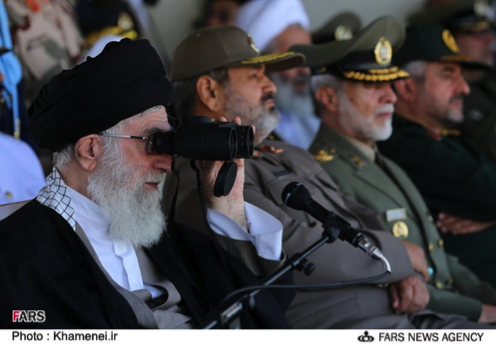
Iran’s (Iraqi and Lebanese) Shia proxies are not the only groups losing members due to their involvement in combat in Syria. Iran is actively contributing infantry personnel to bolster regime of Bashar al-Assad. The Iranian Revolutionary Guard-Quds Force (IRGC-QF); Iran’s long-arm used to create, command, bolster Tehran’s proxies, and execute attacks overseas, has been rather active in Syria.[2] Their movements have not simply been limited to acting as behind-the-scenes guides for proxy or Assad’s forces. In fact, the IRGC-QF has engaged in combat and taken a number of casualties and their losses are becoming increasingly more public.
Back in August, 2012, 48 Iranian “Pilgrims” were kidnapped by Syrian rebels, when they were heading to the Saydah Zaynab Shrine.[3] Rebel forces accused these men of all being IRGC fighters.[4] It was later reported by the Iranians that the group included “Retired” IRGC members.[5] Rebels have also accused the IRGC of acting as commanders for Lebanese Hizballah’s May, 2013 offensive in Qusayr.[6]
Following Lebanese Hizballah’s official May recognition of their full-involvement in Syria, it would appear that Iran is not only becoming more open about their involvement, but also utilizing many of the same narrative points first honed by its regional Shia proxies.
February, 2013, witnessed the loss and public funeral of a senior IRGC-QF commander in Syria. It was claimed by Tehran he was simply working on “Reconstruction projects” in war torn Aleppo. Even with such a high-profile death, little additional information was offered by Iran regarding their activities in Syria.
However, In June, three IRGC members were claimed by Iranian sources to have been killed while operating around Damascus’s Saydah Zaynab Shrine. Proclaiming IRGC members have been killed defending the shrine recycles the exact narrative Lebanese Hizballah and other Iraqi Shia groups have been utilizing for many months. This line also demonstrates that Tehran has become more comfortable with using sectarian-based messaging to convey why it is willing to lose men in the Syrian war.
Based on the released data regarding killed IRGC-QF members, it is likely that Summer-Fall 2013 may witness several more announcements and public funerals.
As opposed to previous Hizballah Cavalcade posts, this post did not rely on the monitoring of social media, forums, or other sources. Instead, announcements of death and photographs were taken from official and officially approved Iranian sources.
__
Name: General Hassan Shateri (A.K.A. Hossam Khoshnevis)
Death Announced: February 13, 2013. It was claimed by Iranian media that Shateri was killed in Syria on February 12, 2013. His funeral was held on February 15, 2013.
Notes: Shateri was a high-level IRGC-QF leader and the highest ranking Iranian killed in Syria. His work with Lebanese Hizballah (and possibly other Iranian-backed organizations in Iraq) was of great importance to the Iranians.[7] This connection was displayed openly at his funeral with funeral-goers waving Lebanese Hizballah flags and placing a Lebanese Hizballah flag on his casket.
Iran’s English-language PressTV reported that Shateri was killed, “by unknown gunmen as he was traveling by road from Syria to Lebanon.” Iran also blamed “Suspected Israeli agents” for Shateri’s death.[8]
Mashregh News posted a number of photos showing Shateri going about his duties in Lebanon (one is reposted here).[9] In Iranian media, the narrative used to explain Shateri’s tasks in Lebanon and Syria was that he was an overseer for the reconstruction of south Lebanon (from damage suffered during the 2006 Hizballah-Israel War). Additionally, Iranian-government-backed Fars News Agency described Shateri’s presence in Syria as the result of, “Reconstruction and development projects” he was working on in Aleppo.[10]

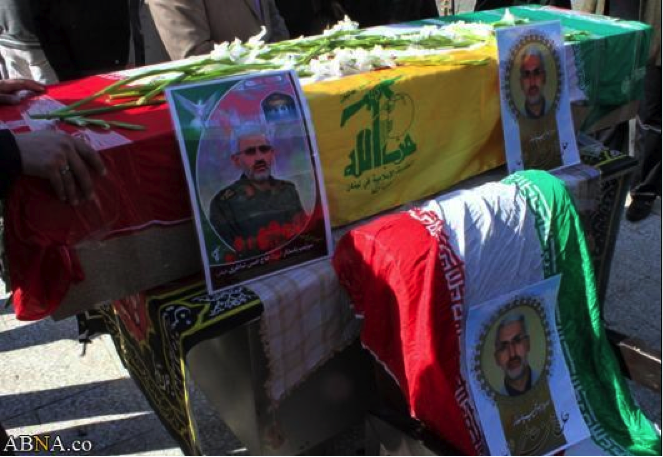
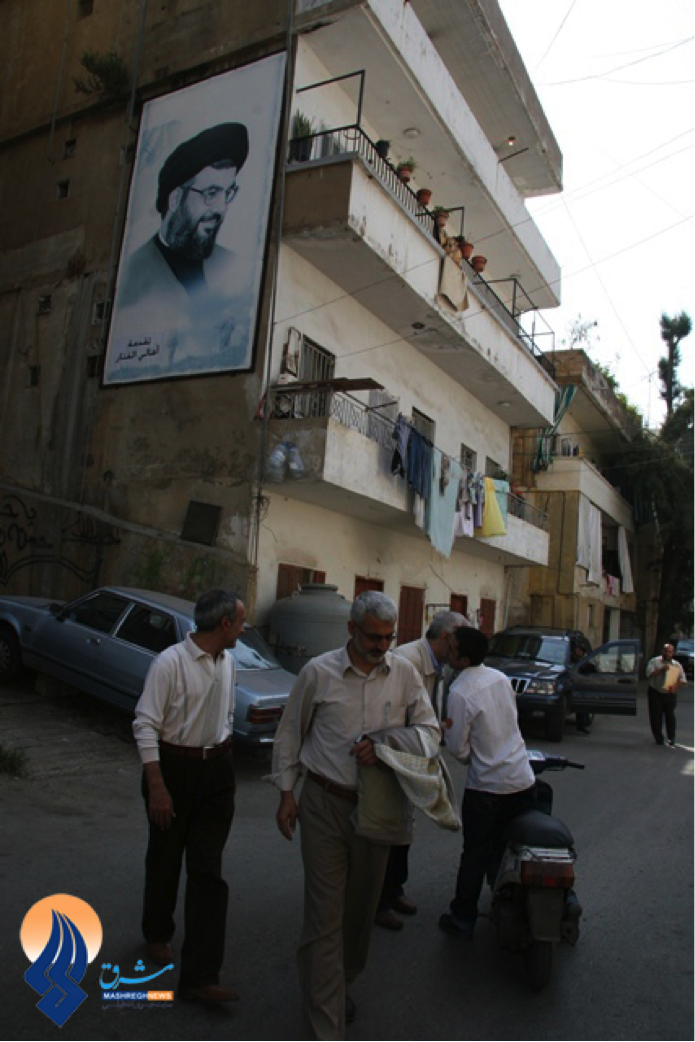
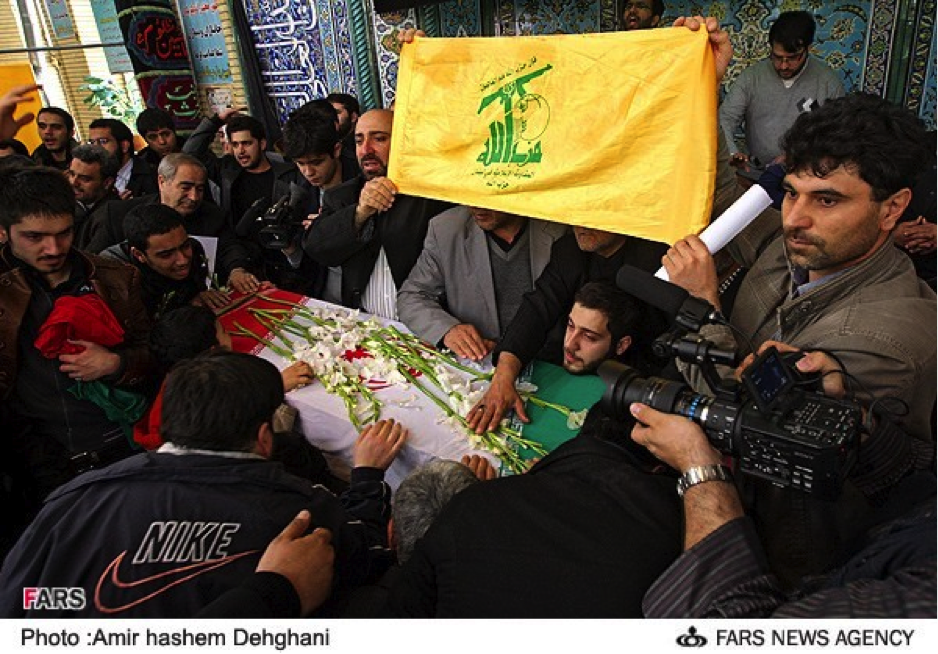
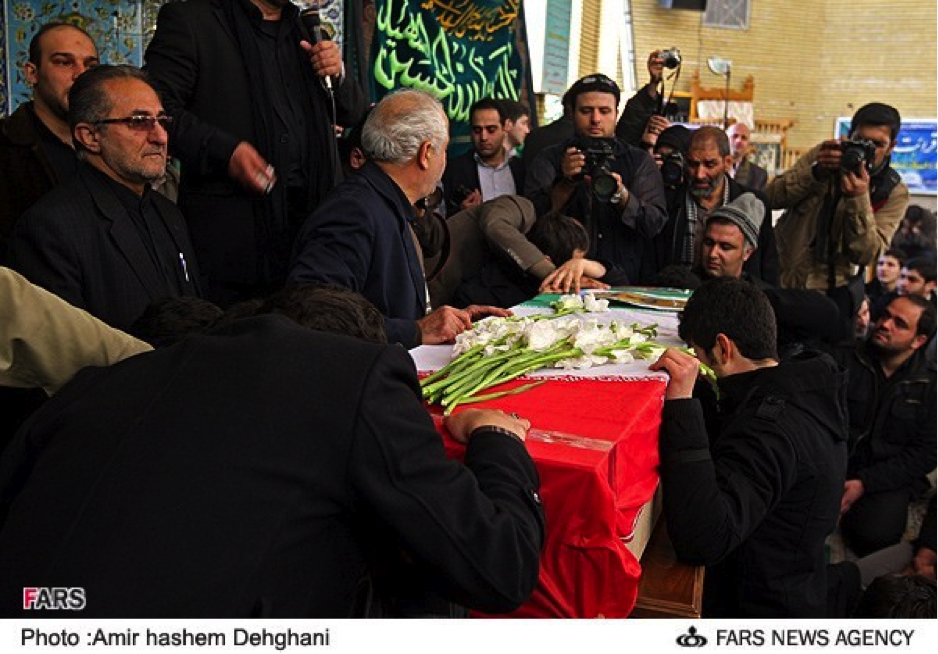
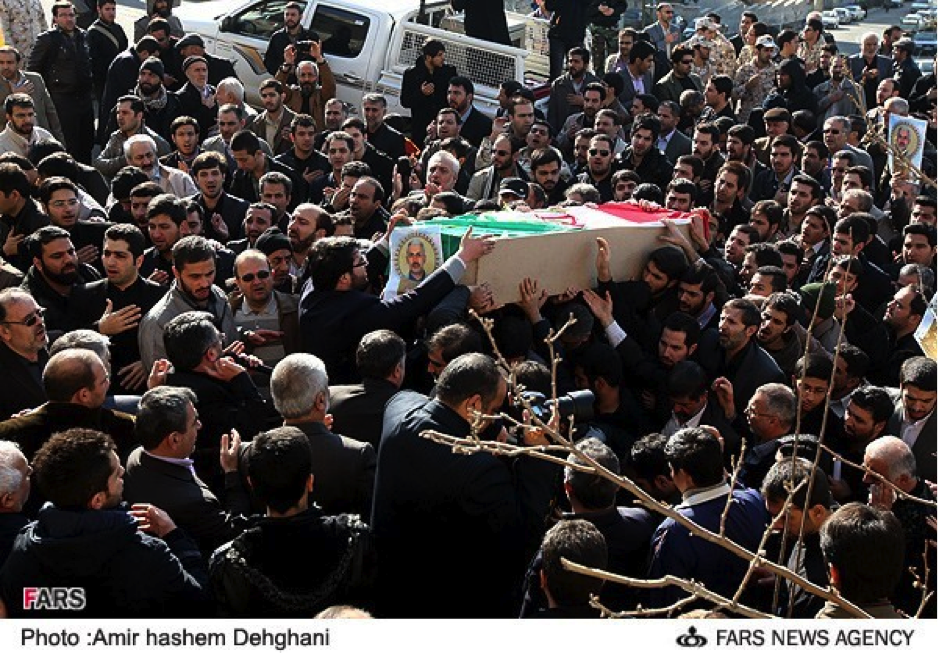
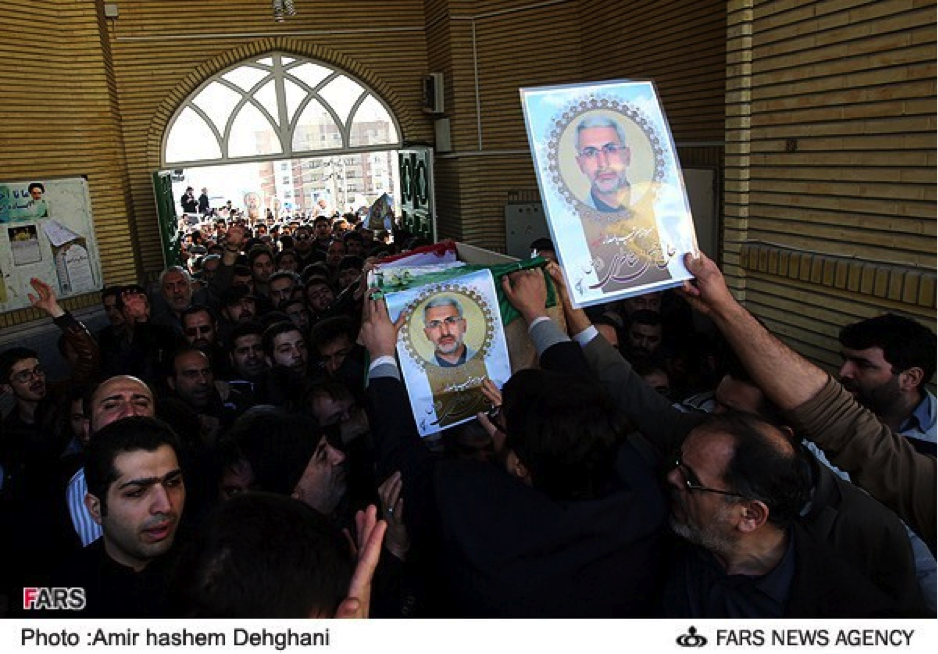
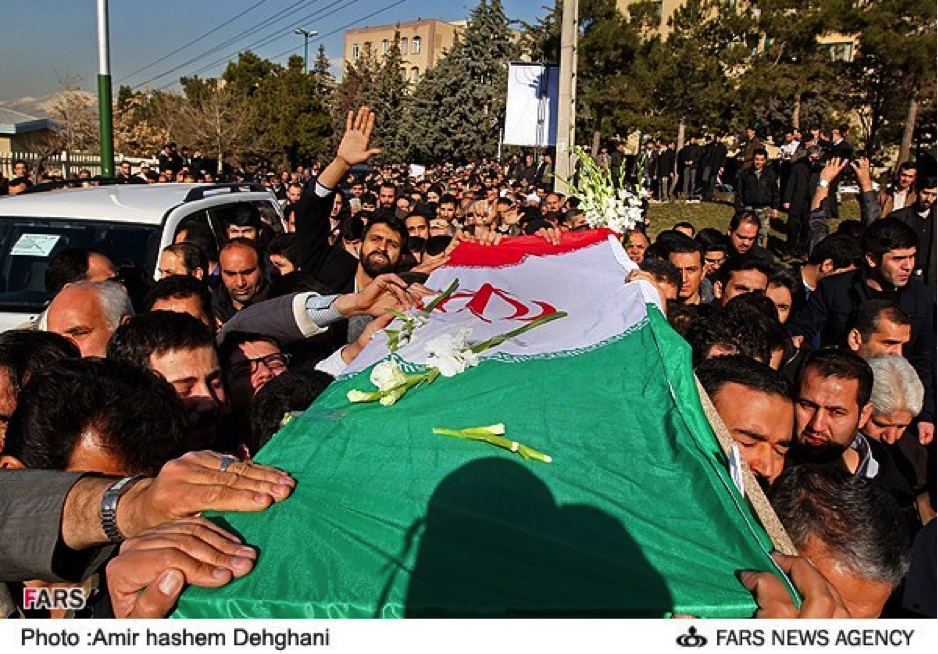
Name: Lt. Colonel Amir Reza Alizadeh
Death Announced: May 4, 2013 (It was announced Alizadeh was killed in Syria on May 1, 2013).
Notes: Iranian reports claimed Alizadeh was killed by an explosion which occurred outside of the Iranian embassy in Damascus. The bombing, according to Iranian state media, was orchestrated by, “Wahhabi terrorists”.[11] Alizadeh’s funeral was held in Rudsar, Iran.[12]
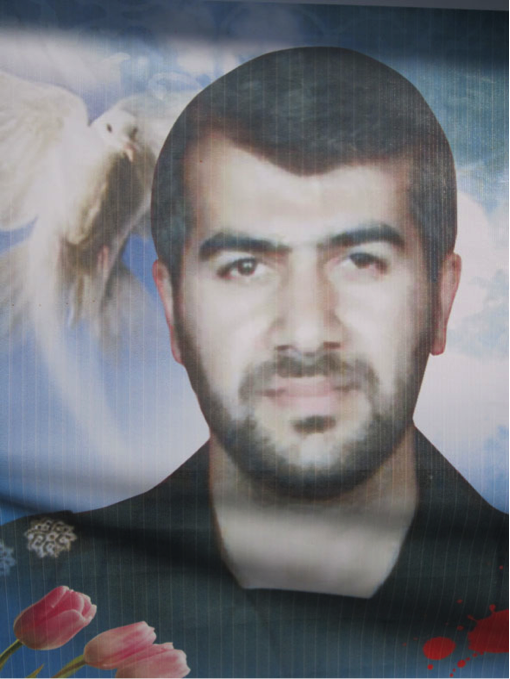
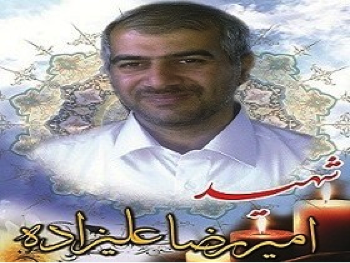

Name: Mehdi Khorasani
Death Announced: June 10, 2013
Notes: Since Shanaei and Khorasani had a shared funeral service, photos for both are located after the entry for Shanaei. Iran’s Damghan News published a full album of funeral photographs. However, the link did not work two days after the photos were posted. Shanaei and Khorashani were pictured together holding AK-47 type rifles in front of the Saydah Zaynab Shrine. Their funeral was the first group funeral (for two or more killed) held in Iran for personnel killed in Syria.
Name: Ali Asqar Shanaei
Death Announced: June 10, 2013
Notes: Shanaei and Khorashani were pictured together holding AK-47 type rifles in front of the Saydah Zaynab Shrine. Their funeral was the first group funeral (for two or more killed) held in Iran for personnel killed in Syria.
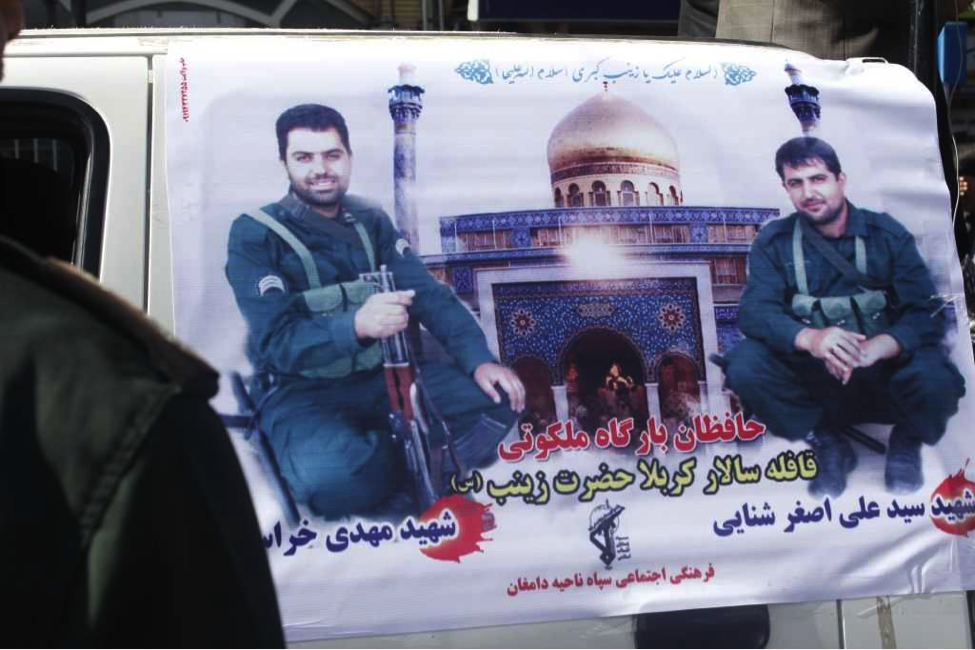
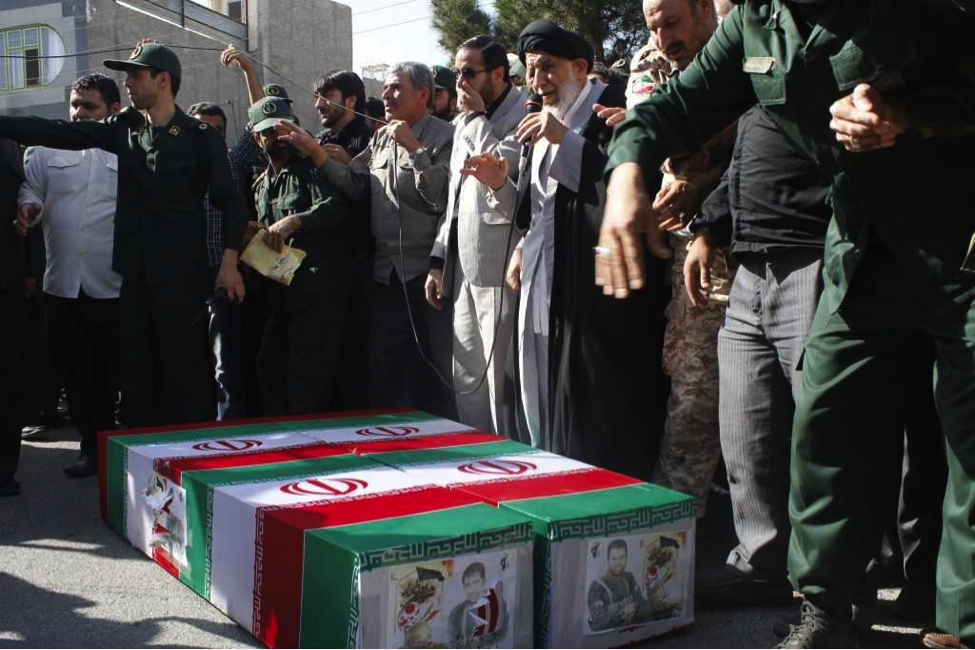
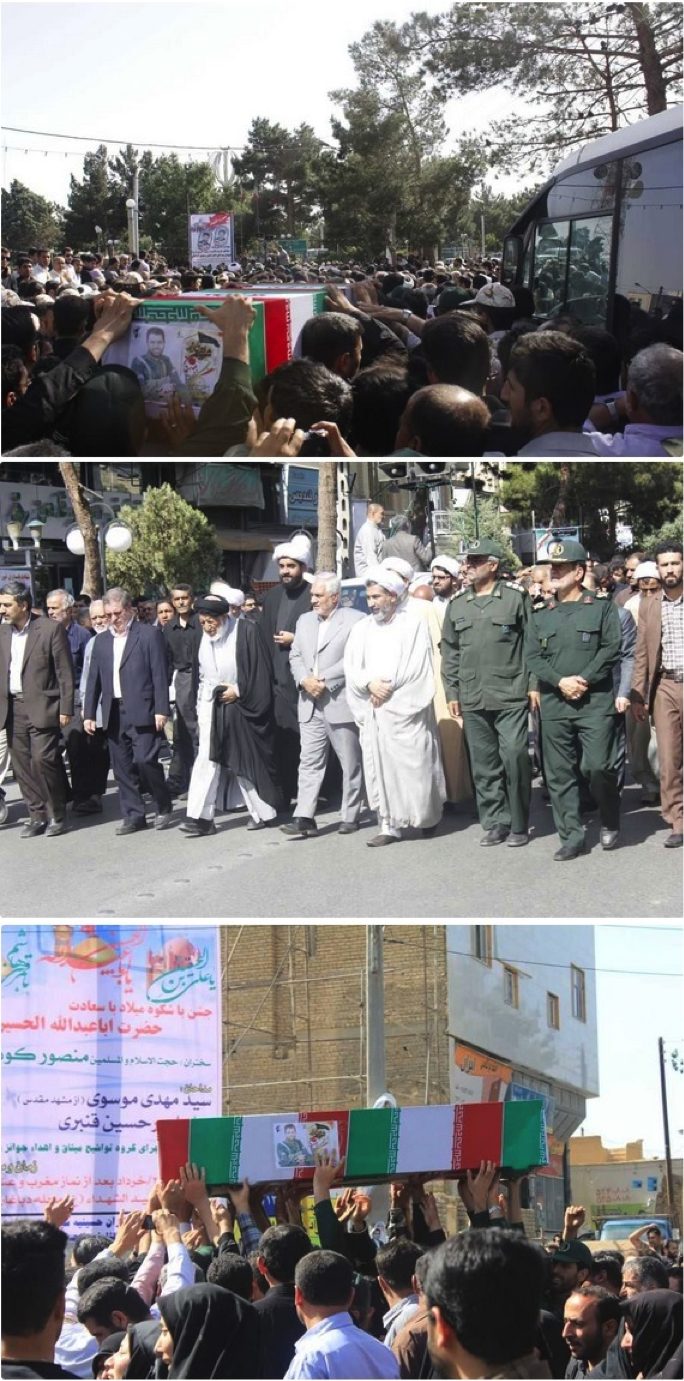
Name: Muhammed Husayn Atareh
Death Announced: June 10, 2013
Notes: Atareh’s casket included numerous IRGC symbols. It was also claimed that Atareh was killed in fighting around the Saydah Zaynab Shrine.
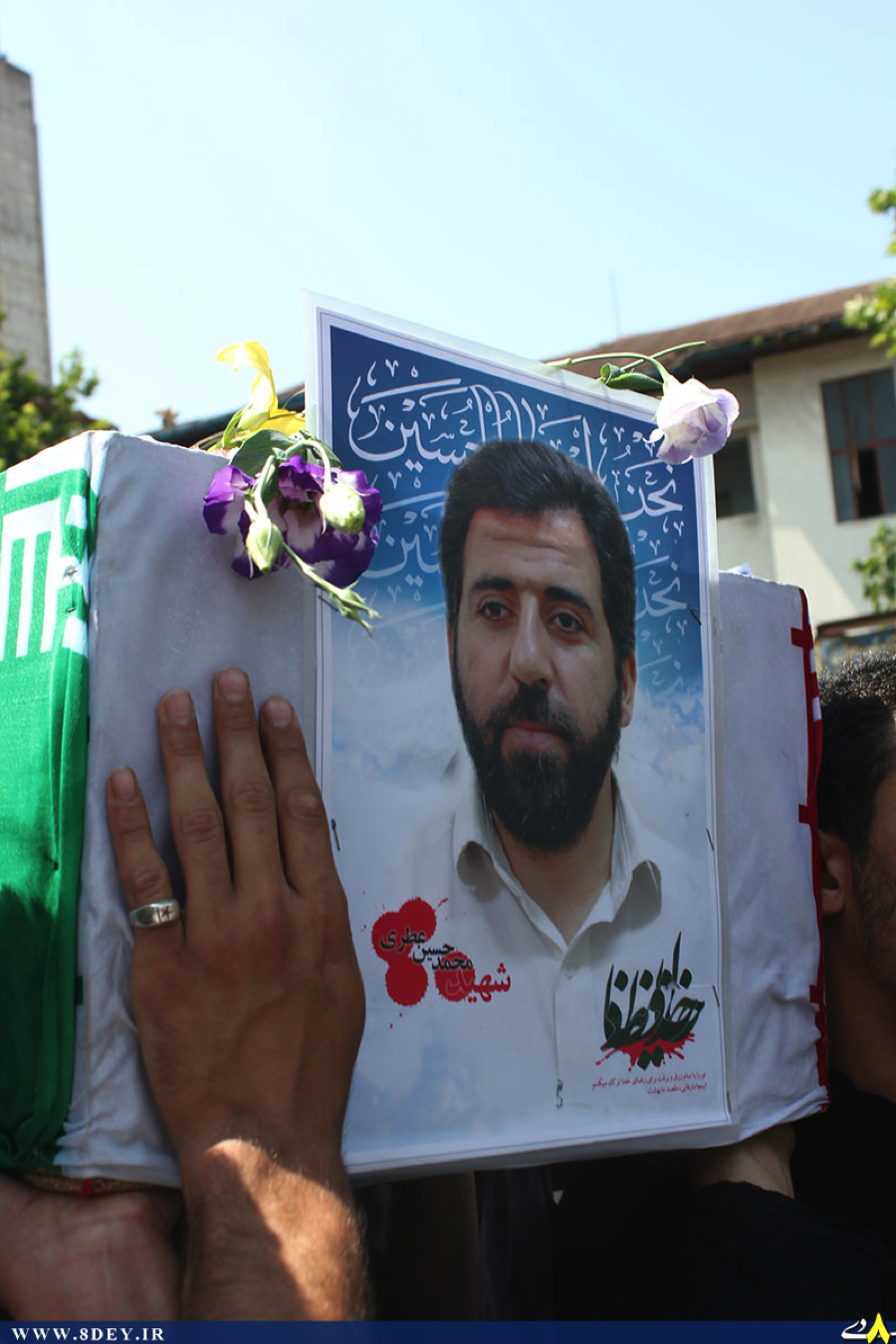
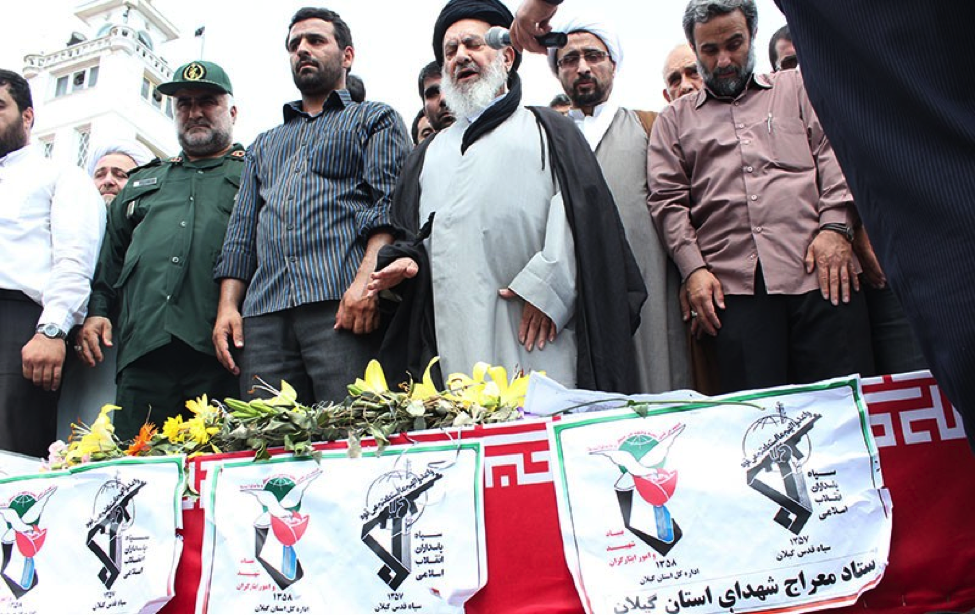
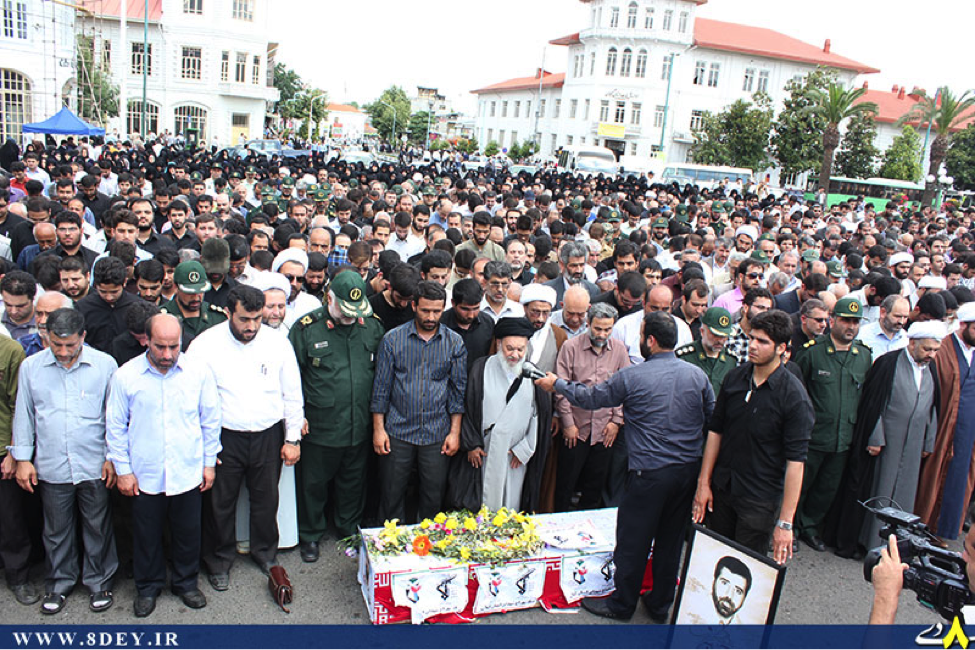
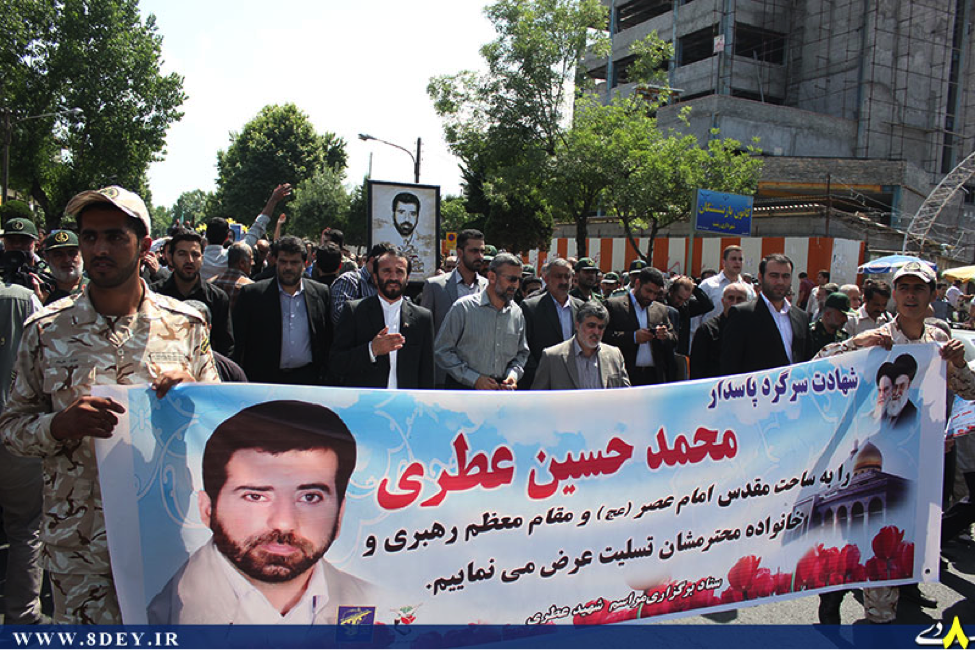
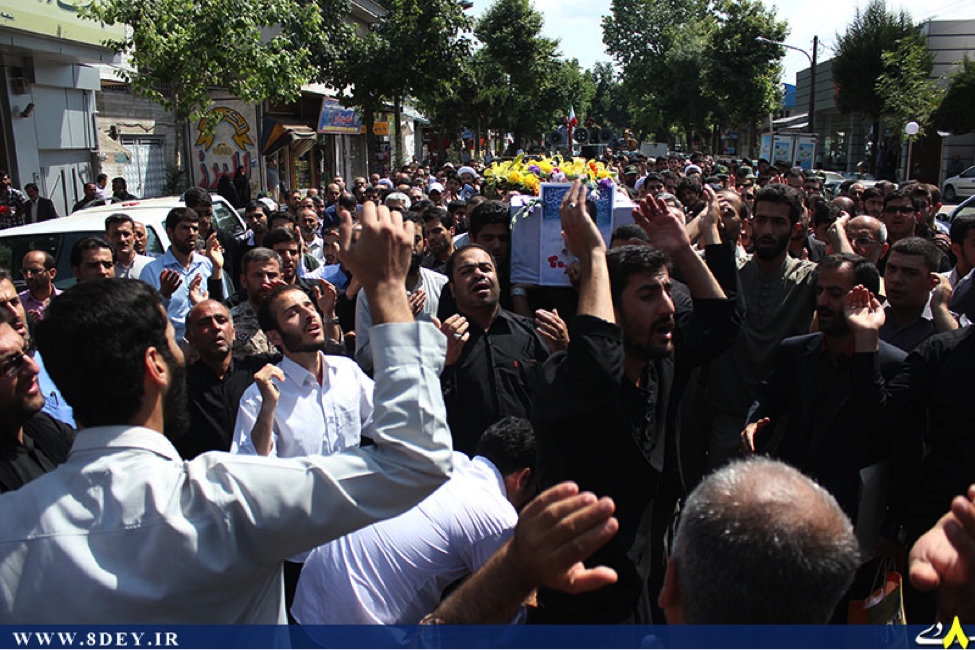
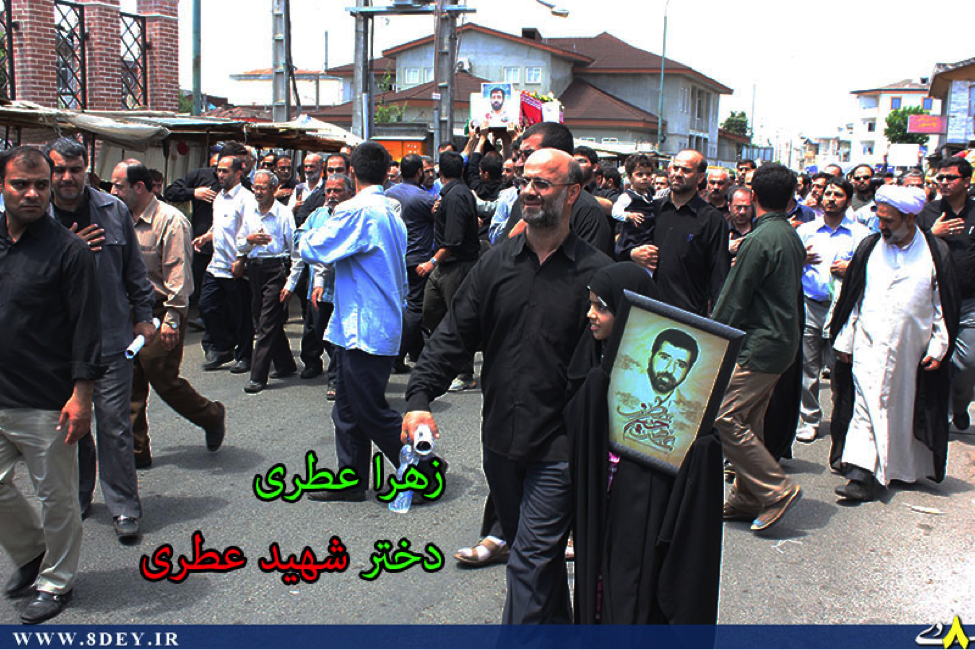
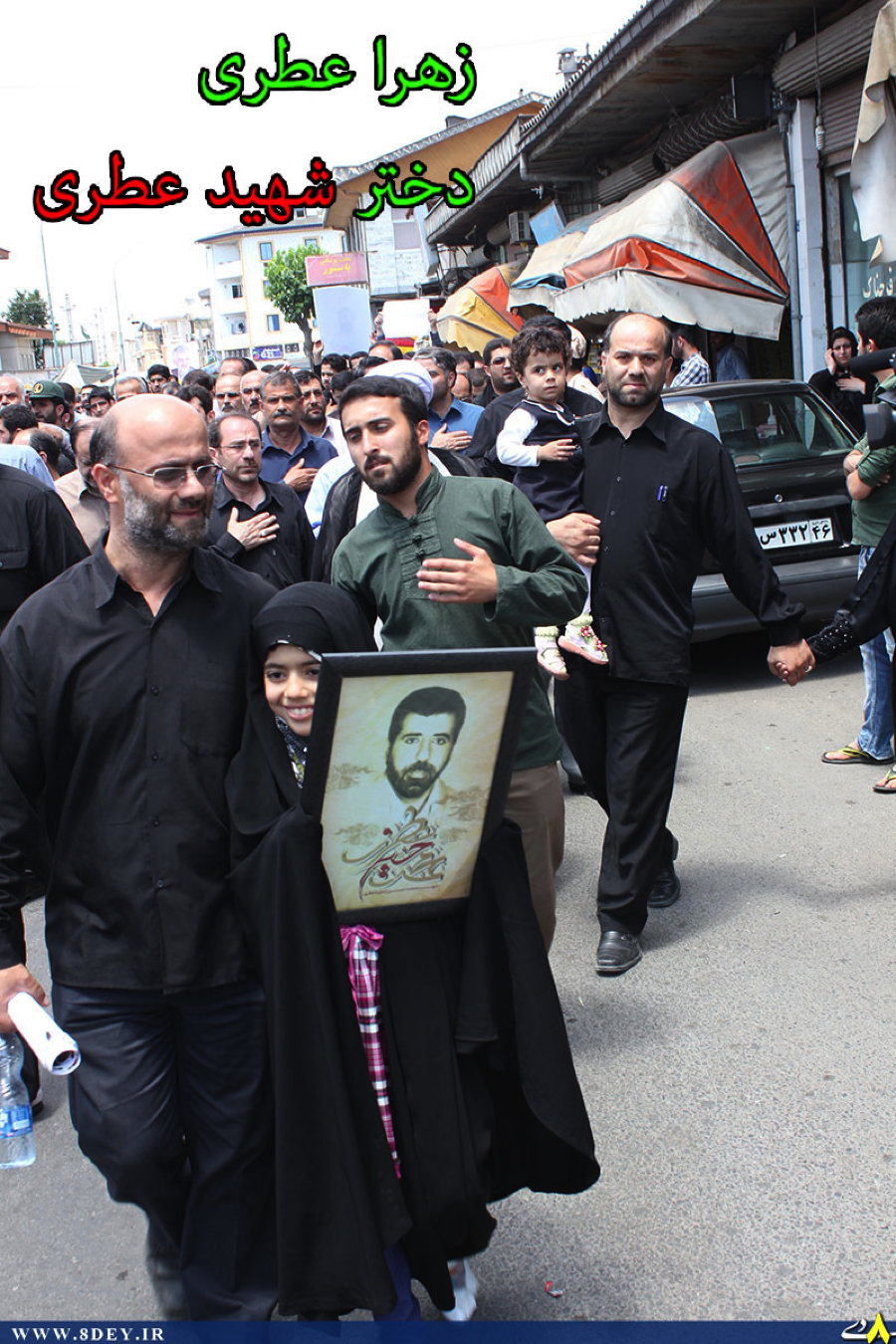
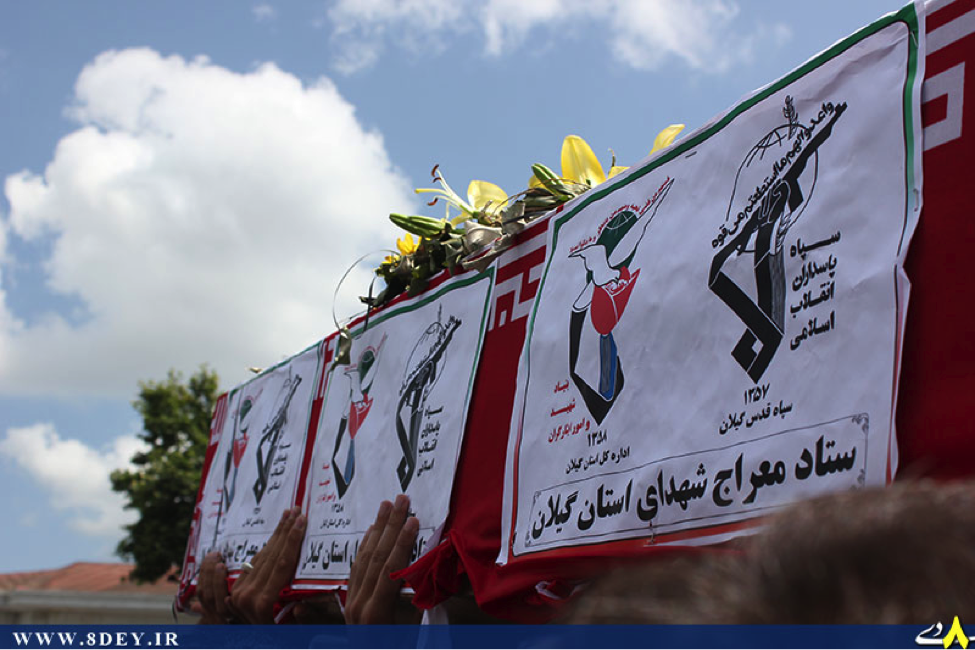
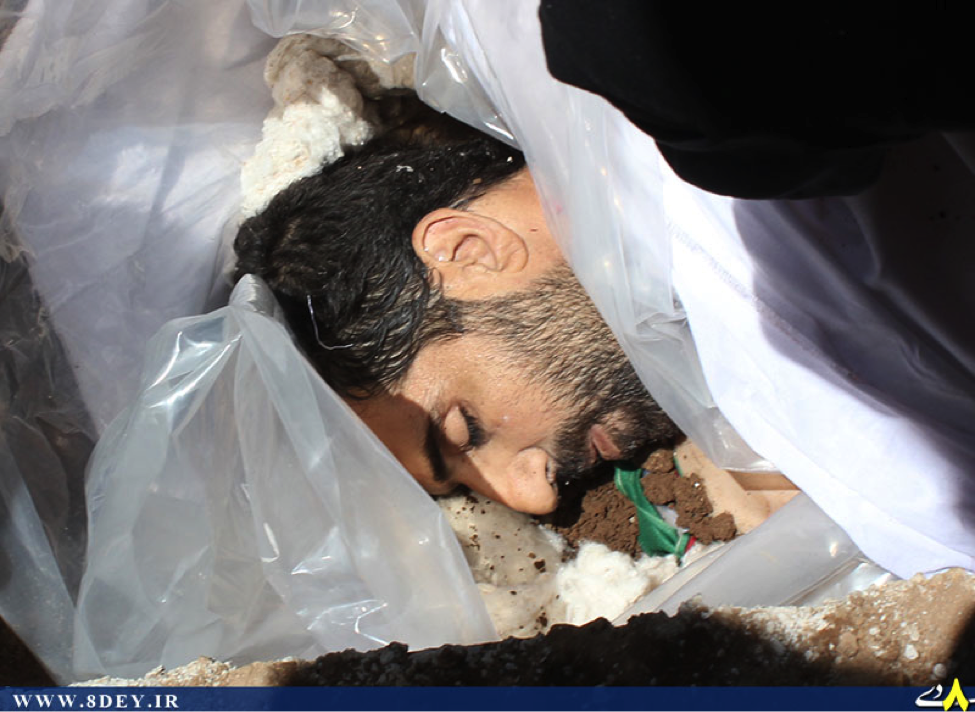
Name: Amir Kazem Zaydeh
Death Announced: June 9, 2013
Notes: Iran’s Mashregh News claimed Zaydeh was killed by a bomb during “Clashes with terrorists”.[13]
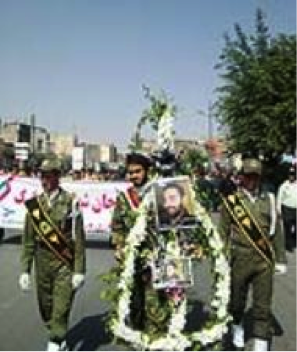
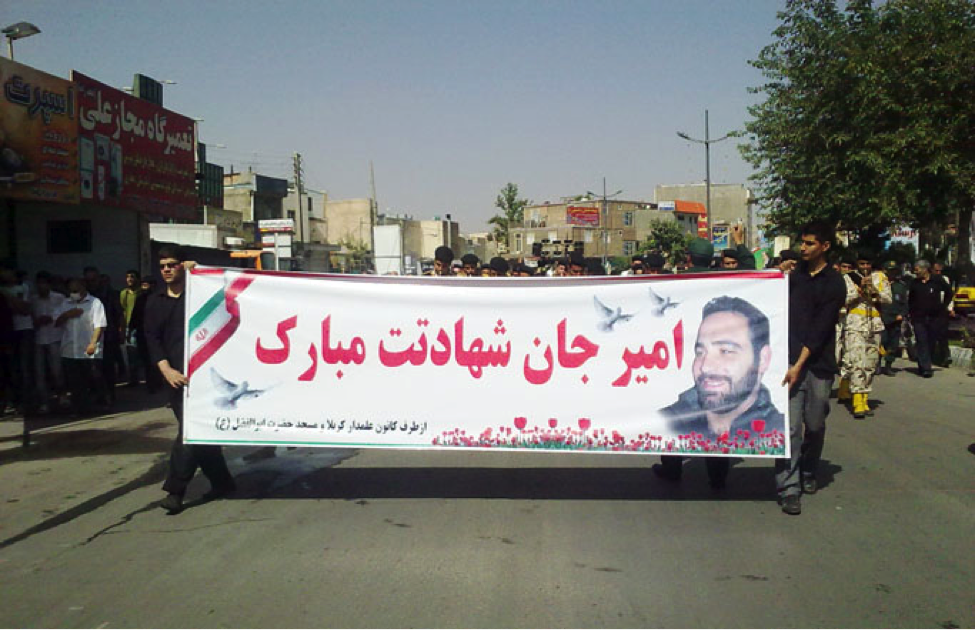 [1] See: https://iranpulse.al-monitor.com/index.php/2013/02/1346/head-of-ammar-strategic-base-syria-is-irans-35th-province-if-we-lose-syria-we-cannot-keep-tehran/
[2] See: https://www.govtrack.us/congress/bills/113/hr854/text
[3] See: https://www.telegraph.co.uk/news/worldnews/middleeast/syria/9451858/Syria-48-Iranian-pilgrims-kidnapped-from-bus-travelling-to-Damascus-airport.html
[4] See: https://www.jpost.com/Middle-East/Tehran-warns-Syrian-rebels-to-free-captive-Iranians
[5] See: https://www.voanews.com/content/retired-iranian-revolutionay-guards-among-those-kidnapped-in-syria/1475622.html
[6] See: https://www.youtube.com/watch?v=C03FDXqkOkI. Reportedly, this is an intercepted radio transmission.
[7] See: https://english.farsnews.com/newstext.php?nn=9107144510
[8] See: https://www.presstv.com/detail/2013/02/14/288857/irgc-commander-assassinated-in-lebanon/
[9] See: https://www.mashreghnews.ir/fa/news/193817/%D8%AA%D8%B5%D8%A7%D9%88%DB%8C%D8%B1-%D8%A7%D8%AE%D8%AA%D8%B5%D8%A7%D8%B5%DB%8C-%D9%85%D8%B4%D8%B1%D9%82-%D8%A7%D8%B2-%D8%B3%D8%B1%D8%AF%D8%A7%D8%B1-%D8%B4%D9%87%DB%8C%D8%AF-%D8%AD%D8%B3%D9%86-%D8%B4%D8%A7%D8%B7%D8%B1%DB%8C
[10] See: https://abna.ir/data.asp?lang=3&Id=391473
[11] See: https://www.ido.ir/n.aspx?n=13920222001.
[12] See: https://www.mehrnews.com/detail/News/2046534.
[13] See: https://www.mashreghnews.ir/fa/news/222075/%D9%BE%D9%8A%DA%A9%D8%B1-%D8%B4%D9%87%D9%8A%D8%AF-%DA%A9%D8%A7%D8%B8%D9%85%E2%80%8C%D8%B2%D8%A7%D8%AF%D9%87-%D8%A8%D9%87-%D8%AE%D8%A7%DA%A9-%D8%B3%D9%BE%D8%B1%D8%AF%D9%87-%D8%B4%D8%AF-%D8%B9%DA%A9%D8%B3
[1] See: https://iranpulse.al-monitor.com/index.php/2013/02/1346/head-of-ammar-strategic-base-syria-is-irans-35th-province-if-we-lose-syria-we-cannot-keep-tehran/
[2] See: https://www.govtrack.us/congress/bills/113/hr854/text
[3] See: https://www.telegraph.co.uk/news/worldnews/middleeast/syria/9451858/Syria-48-Iranian-pilgrims-kidnapped-from-bus-travelling-to-Damascus-airport.html
[4] See: https://www.jpost.com/Middle-East/Tehran-warns-Syrian-rebels-to-free-captive-Iranians
[5] See: https://www.voanews.com/content/retired-iranian-revolutionay-guards-among-those-kidnapped-in-syria/1475622.html
[6] See: https://www.youtube.com/watch?v=C03FDXqkOkI. Reportedly, this is an intercepted radio transmission.
[7] See: https://english.farsnews.com/newstext.php?nn=9107144510
[8] See: https://www.presstv.com/detail/2013/02/14/288857/irgc-commander-assassinated-in-lebanon/
[9] See: https://www.mashreghnews.ir/fa/news/193817/%D8%AA%D8%B5%D8%A7%D9%88%DB%8C%D8%B1-%D8%A7%D8%AE%D8%AA%D8%B5%D8%A7%D8%B5%DB%8C-%D9%85%D8%B4%D8%B1%D9%82-%D8%A7%D8%B2-%D8%B3%D8%B1%D8%AF%D8%A7%D8%B1-%D8%B4%D9%87%DB%8C%D8%AF-%D8%AD%D8%B3%D9%86-%D8%B4%D8%A7%D8%B7%D8%B1%DB%8C
[10] See: https://abna.ir/data.asp?lang=3&Id=391473
[11] See: https://www.ido.ir/n.aspx?n=13920222001.
[12] See: https://www.mehrnews.com/detail/News/2046534.
[13] See: https://www.mashreghnews.ir/fa/news/222075/%D9%BE%D9%8A%DA%A9%D8%B1-%D8%B4%D9%87%D9%8A%D8%AF-%DA%A9%D8%A7%D8%B8%D9%85%E2%80%8C%D8%B2%D8%A7%D8%AF%D9%87-%D8%A8%D9%87-%D8%AE%D8%A7%DA%A9-%D8%B3%D9%BE%D8%B1%D8%AF%D9%87-%D8%B4%D8%AF-%D8%B9%DA%A9%D8%B3
Four new statements from Jabhat al-Nuṣrah

Click the following link for a safe PDF copy: Jabhat al-Nuṣrah — Some of the Bombing Operations of the Headquarters of the Nuṣayrī Army With Mortars in Dayr al-Zūr (Deir al-Zour)

Click the following link for a safe PDF copy: Jabhat al-Nuṣrah — Targeting a Group of Shabīḥah in the Jurmānah Area in Damascus With Three Katyusha Rockets

Click the following link for a safe PDF copy: Jabhat al-Nuṣrah — Some Bombing Operations With Mortars in Damascus and Its Countryside

Click the following link for a safe PDF copy: Jabhat al-Nuṣrah — Report of Some of the Security Operation in the City of Damascus (March-April 2013)
___________
To inquire about a translation for these statements for a fee email: [email protected]
Musings of an Iraqi Brasenostril on Jihad: Jabhat al-Nusra and the Islamic State of Iraq and ash-Sham: Aleppo Area
NOTE: In addition to the recent column started by Phillip Smyth “Hizballah Cavalcade,” “Musings of an Iraqi Brasenostril on Jihad” is a new semi-regular column that Aymenn Jawad Al-Tamimi will be writing. This was borne out of his excellent guest posts. I hope his posts will be useful to all who read in better understanding and dissecting what is going on in Syria and beyond as it relates to global jihadis. An archive of all of Aymenn’s posts can now be found here.
—
By Aymenn Jawad Al-Tamimi
The past week or so has seen a significant controversy erupt in jihadist circles over the relationship between an entity called the Islamic State of Iraq and ash-Sham (ISIS)- a merger of Islamic State of Iraq (ISI) and Jabhat al-Nusra (JAN) first proclaimed by ISI emir Abu Bakr al-Baghdadi in April- and JAN as headed by Abu Mohammed al-Jowlani.
First came a purported letter by Jowlani circulated to his followers, summarizing an alleged edict by Aymenn al-Zawahiri that denied responsibility for Baghdadi’s announcement of ISIS and accordingly called for the abolition of this name, and recognition that ISI and JAN have the separate spheres of Iraq and Syria respectively. The Zawahiri document then came to light only a couple of days later, obtained by al-Jazeera.
The supposed Jowlani letter and the alleged ruling by Zawahiri (NB: I have provided full translations with notes on both documents here and here) both emphasize the need for cooperation between ISI and JAN, and mutual respect for each other’s efforts of jihad. In short, the documents merely call for an end to the name of ISIS, and stress an ideal harmony that is thought to have existed prior to Baghdadi’s declaration of ISIS.
Whatever the truth behind these documents, a quick search on Twitter, Facebook, forums and the like will show that many jihadi activists and media groups are continuing to use the name of ISIS as if nothing has happened. Most notably, the newspaper ash-Sharq al-Awṣat claims to have obtained a document circulated by those under the banner of ISIS denying the authenticity of the Zawahiri letter (hat-tip: Charles Lister).
Whether or not the newspaper has an authentic ISIS document, there are understandable reasons why those favoring the brand of ISIS might be skeptical? Why, for example, did Zawahiri not simply discuss the issues in his purported letter in the video statement? Why also did Jowlani not issue his letter in the name of JAN’s media channel al-Manarah al-Bayḍā’, which in the letter he claims will return to full operation very soon?
There are of course reasonable counter-arguments to these objections, most notably if one posits the idea that Zawahiri- as the alleged letter from him suggests- wanted the naming controversy dealt with quietly on the ground and out of the site of media, hence the initial lack of discussion in jihadi circles on social media and forums.
Yet here I am not so much concerned with debating the authenticity of the documents as realities and perceptions on the ground. What is apparent from recent evidence is that ISIS is an active entity in the Aleppo area, going beyond mere tweets and Facebook statuses of jihadis. In media articles on the ISIS-JAN controversy, reporters like Basma Atassi and Mariam Karouny have drawn a dichotomy of foreign fighters versus native Syrians, whereby the majority of the former are said to have flocked under the banner of ISIS.
Certainly this paradigm of analysis makes sense in Aleppo, which has since last year seen a particularly strong concentration of foreign mujahideen relative to other areas. There are in fact other battalions in the wider area using the same al-Qa’ida banner as ISIS, such as the Katiba al-Muhajireen (KAM) led by Abu Omar al-Shishani and Majlis Shura al-Mujahideen (not to be confused with the Gaza/Sinai group).
Thus, this relatively recent photo of a Qatari mujahid in Aleppo could be a fighter aligned with any one of the aforementioned groups. However, it must be recognized that the boundaries between these groups is not at all clear-cut, rather analogous to the fact that Iranian proxy groups in Iraq can serve as mere fronts for one another. In this context, my friend Shami Witness rightly points out that Baghdadi had appointed Shishani as emir of Aleppo, Idlib and Lattakia.
The most recent wave of evidence for ISIS activities in the Aleppo area most prominently featured the circulation of a photo of ISIS insignia being used in the area. As far back as 18 May, the pro-ISIS channel ash-Sham reported that ISIS fighters had freed a number of prisoners from Aleppo central prison.
It would appear that ISIS in Aleppo has been conducting siege operations against the central prison for quite some time, for the Syrian Observatory on Human Rights reported on June 7 that ISIS fighters in coordination with Harakat Ahrar ash-Sham was targeting the central prison with machine-gun fire.
Meanwhile, the past few days has seen a surge in the number of Youtube videos uploaded by the Halab News Network (NB: not pro-ISIS, but simply providing footage of developments in the Aleppo area) allegedly showing ISIS operations.
For instance, here is a video from the Duwerineh district of Aleppo, purporting to show clashes between ISIS fighters and regime forces. Here are two other videos from the same area, allegedly showing ISIS men targeting regime forces with Grad-missiles.
Another area of operations for ISIS is the regime stronghold of Jabal Ma’ar (dubbed Jabal Shouihna in the video titles), which is also being targeted by other battalions like the Kata’ib Nur ad-Din az-Zinki (see Facebook page here). Thus, here is one video where ISIS purportedly targets a tank with a Malyutka missile.
Likewise, here is a video of the aftermath of ISIS bombardment of regime positions in the same area. Further, here is a video of ISIS fighters in the area firing at regime forces: and note in particular the presence of the ISIS flag on the Mazda car.
So what of the relation between ISIS and JAN in the Aleppo area? To be sure, there is certainly a JAN presence in Aleppo (e.g. see this recent photo from Halwaniya). To hear from the report by Basma Atassi in particular, there have been tensions in Aleppo over distribution of flour, as fighters aligned with ISIS did not recognize the committee headed by JAN and other battalions responsible for said distribution.
Thus, Atassi’s report implies that in Aleppo, ISIS and JAN are two separate entities, which contrasts with the situation in Raqqah Governorate where ISIS and JAN are more or less synonymous and interchangeable. In my view this separation in the Aleppo area is borne out with other evidence.
For example, recently a report emerged from Aleppo of a child who had been brutally slain, allegedly by Islamist rebels for apostasy. In response, JAN and ISIS issued separate statements disassociating themselves from the execution, with the JAN statement also bearing a stamp of the ‘Shari’a committee in Aleppo’ and ‘Jabhat al-Nusra.’
Here is a copy of the ISIS statement, bearing the familiar stamp of the group and lacking identification with any Shari’a committee in the city. This corroborates the idea of lack of recognition by ISIS of the already established Shari’a organizations in Aleppo.
Videos of ISIS rallies in Aleppo also add to this portrait of separation and a degree of animosity between ISIS and JAN in Aleppo. Here is one video of an ISIS rally in the Bab al-Hadid area, featuring a recital of al-Fātiḥa. In a similar vein, here is a video of an ISIS march through Tariq al-Bab. Here is another video of the same rally, featuring the nasheed ‘Labbayka Islam al-Butula’ (see translation on my website; it is popular with Hizb-ut-Tahrir in Syria too).
There are two things to note about these rallies. First, Jabhat al-Nusra flags are nowhere to be seen. Second, the demonstrations are entirely separate from those held elsewhere in Aleppo featuring FSA flags, giving a strong contrast with Raqqah where ISIS, JAN and FSA flags can be observed together in a rally united under one cause (see my Jihadology post on Raqqah, as well as this recent video).
All this evidence suggests that no concord of understanding has been reached between pro-ISIS demonstrators and those of different ideological inclinations, or even with JAN activists who are similarly al-Qa’ida-aligned.
In sum, whereas Raqqah showed how JAN and ISIS could generally be interchangeable, the case of Aleppo appears to provide strong indications that the two organizations are separate and at odds with each other, with ISIS containing a disproportionate number of foreign fighters who are more strongly concentrated in Aleppo than other parts of the country.
Indeed, nothing may be thought to encapsulate this issue of ISIS, foreign fighters and Aleppo better than this video of a Turkish fighter under the ISIS banner in Aleppo (Duwerineh). The Raqqah-Aleppo contrast illustrates just how fragmented both ISIS and JAN are.
In any event, so long as there is no clear, public statement by Zawahiri or any other figures involved in the naming controversy of ISIS and JAN, and bearing in mind the issue of inevitable personal rivalries among different rebel groups, the problems of ISIS-JAN tensions in rebel-held areas of Aleppo are likely to remain and grow, even if clashes with regime forces in the Aleppo area do not preclude military cooperation between ISIS and other battalions.
Aymenn Jawad Al-Tamimi is a Shillman-Ginsburg Fellow at the Middle East Forum and a student at Brasenose College, Oxford University. His website is https://www.aymennjawad.org. Follow on Twitter at @ajaltamimi
New statement from Ibn Taymīyyah Center for Media’s Field Monitoring Committee: "Internal Security Kidnapped Salafī Preacher Abū Mu'ādh al-J'aytnī"

Click the following link for a safe PDF copy: Ibn Taymīyyah Center for Media’s Field Monitoring Committee — “Internal Security Kidnapped Salafī Preacher Abū Mu’ādh al-J’aytnī”
____________
To inquire about a translation for this statement for a fee email: [email protected]
Barā'ah Media Foundation presents a new statement from Anṣār al-Sharī'ah in Bilād Shinqīṭ's Abū Ayyūb al-Shinqīṭī: "Call to Rescue the Kidnapped"

Click the following link for a safe PDF copy: Abū Ayyūb al-Shinqīṭī — “Call to Rescue the Kidnapped”
__________
